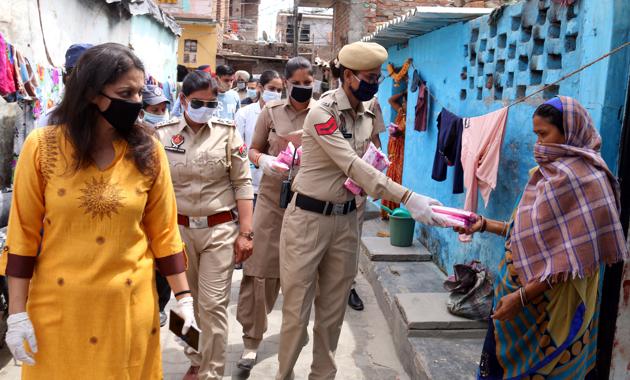How Covid-19 invisibilises concerns of women, girls
A much stronger gender lens needs to be built into the Covid-19 response so that we don’t lose hard won gains made in regard to women’s rights and well-being in education, health and empowerment
The coronavirus disease (Covid-19) pandemic has cut across all sections of society, but while we are all facing the same storm, the boats we sail in are different. The hierarchies of class, caste and gender significantly determine the nature of challenges each of us face. In India, the pandemic has exacerbated existing inequities, including with regard to gender.

Girls in India face a continuum of discrimination even before birth, with the risk of sex-selective abortions, through to childhood and manifesting even in adult life through a multitude of regressive social norms and practices. Women’s contribution to the economy is unrecognised.Women bear the silent and essential burden during crises as primary providers of care at home and in health care settings. For instance, over 900,000 accredited social health activist workers are at the forefront of the Covid-19 crisis management, working at great personal risk and minimal compensation.
The pandemic holds the risk of further invisibilising women and girls and their concerns. So far, the government has extended support by providing Rs 1,500 over three months to nearly 200 million women holding Jan Dhan accounts, it has also promised to reimburse the cost of cylinders from April to June to beneficiaries of the Ujjwala scheme. However, there are issues of access to bank services as well as availability of cash that women, especially poor women, are facing at the moment. The halt of all economic activity has worsened growth prospects taking unemployment levels to unprecedented levels. This lack of jobs will further disadvantage women, over 90% of whom are employed in the informal sector. The female workforce participation rate in India is 23%, and is in danger of falling further due to the crisis.
Besides endangering their own economic independence and the survival of their families, the lockdown has had the most impact on the health, both physical and mental, of women. With the lockdown now being eased, the government must categorise all services catering women’s reproductive health as “essential” and violence against women must be seen as a health care issue to prevent needless deaths and pain. Violence against women increases during most crises, including epidemics. The National Commission for Women has reported increases in violence against women in the last two months. The numbers that are reported are only an indication of the depth of this problem. Most cases of violence go unreported due to fear and shame created by dominant social norms. The culture of impunity ingrained in the patriarchal society stands to be further strengthened with the understaffed police force having to bear the responsibilities of enforcing lockdowns and ignoring issues of violence against women. The lockdown and economic stress act as a perfect storm for abuse of women. It is worsened by the grim reality of the digital divide between men and women, with males accounting for 67% of India’s online population. This means that even when those women who own a phone want to reach out to helplines, in many cases, they can’t as they are stuck at home under the control of family members. Proactive measures by the government such as awareness campaigns through local government bodies and NGOs and functional helplines are urgently needed to prevent the abuse of women.
A much stronger gender lens needs to be built into the Covid-19 response so that we don’t lose hard won gains made in regard to women’s rights and well-being in education, health and empowerment. The inequality and high rates of violence experienced by women is a global pandemic and a national crisis. It has sadly been made worse by Covid-19 and the lockdown, and calls for attention both in our homes, and in the world outside.
for women’ rights






